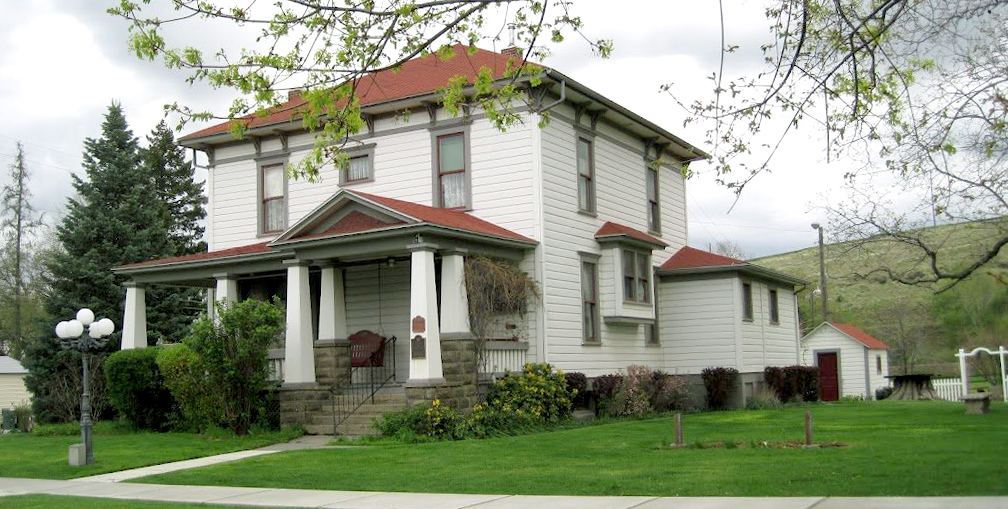FLUMES FOR LOGGING
Excerpts
From the Walla Walla Union-Bulletin, November 14, 1982, by Vance Orchard
Walla Walla growth came because early settlers met the challenges of a booming community with ingenuity in the face of difficulty. Supplying the huge demand for housing and commercial structures in the 1870’s and 1880’s called for lots of ingenuity in the form of moving wood products from the nearby mountains. While ‘nearby’ in today’s terms, the timber 100 years ago was actually many miles removed because of the lack of adequate roads of any kind to tap that timber. Timber of a wide variety grew in abundance on the slopes of the Blue Mountains. Today, fast trucks haul logs for many miles to mills located in the cities. 100 years ago, mills were built in the mountains and the lumber for houses, fences, firewood and railroad ties were transported from them to the cities below.
Transportation was by a unique method: three to eight-foot wide flumes carrying a heavy stream of water along the steep hillsides down to a central point many miles below. It wasn’t easy though. The physical construction aspects were difficult enough; other elements thrust themselves into the effort as property owners brought out their guns to try to stop the construction in some places. But, by and large, the construction of flumes was a successful enterprise on at least three major streams of the Blue Mountains: the Touchet River, Mill Creek and the Walla Walla River.
Building of the mountain sawmills was called second only to the building of flour mills in importance to the growth of the Walla Walla Valley, located as it was in a largely treeless area, but ringed by thousands of acres of timber.
The small mill built by Dr. Marcus Whitman in 1845 on Mill Creek – supposedly what gave the stream its present name – was the first of several which were to come. Samuel Linkton built one in 1862 on the mountain which has his name. He built others over the years.
Dr. Dorsey Baker, who complete his Wallula-to-Walla Walla railroad in 1875, had to first build a sawmill at Wallula, then raft ties cut in the Cascades, Bitterroots and Blue Mountains down to the mill site. While building his railroad, Dr. Baker, ever alert to a good business venture, was considering supplying the boomtown of Walla Walla with lumber from the upper Mill Creek drainages. But, he had to defer to the railroad and its completion. Upon its sale in 1878, Dr. Baker turned his attention to a flume down Mill Creek.
The flume down Mill Creek was not the only such facility built here to move quantities of logs or lumber out of the mountains. It wasn’t the first started, either. Another pioneer Walla Walla doctor and man of vision, Dr. N. G. Blalock, launched a flume down the South Fork of the Walla Walla River in 1874. By 1880, he had completed 28 miles at a cost of some $56,000.
Dr. Blalock bought 1,280 acres of timber on the mountain bearing his name, and his men cut timber for use as fencing for the farms springing up as well as firewood to heat the homes on those farms. The flume was extended at intervals to Milton, running down the present Mill Street there and thence to a terminus where now stands Pleasant View School.
By 1882, Dr. Blalock had sold out to the Oregon Improvement Co., which was supplying railroad ties for the Oregon Railroad and Navigation Co., expanding rapidly in those years throughout eastern Washington and Oregon. The OIC had also taken over a third flume operation, and was soon sending timber out of the Blue Mountains down the Touchet River to Dayton.
With the development of roads and hauling equipment, flumes seem a cumbersome method, but their use greatly speeded development of this region’s resources.
